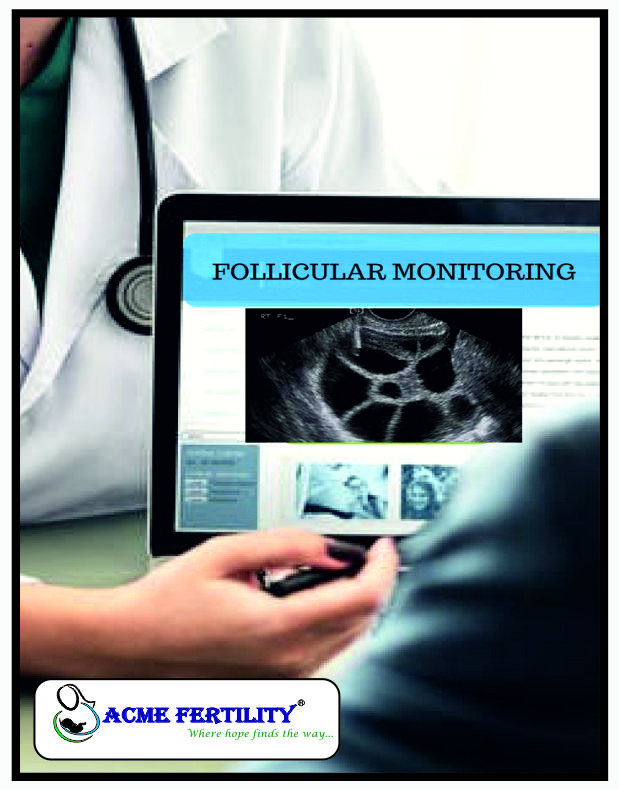Follicular Monitoring is the process of serial ultrasonic monitoring of the ovarian follicles used to identify maturation status of eggs. It is useful for assessing the size of the follicle that supports the growing egg and for determining the thickness of the uterine lining.
A) Indications & Advantages –
If you are a woman trying to conceive, one of your biggest challenges in fertility as you grow older is the suitability of your eggs. Egg production can be greatly affected by your age both in quality and in number. By the time you are in your late 30s or early 40s, you will probably have more poor quality eggs available than good quality eggs. The impact of poor quality eggs is reflected in the general decline of pregnancy rates as women age. One of the first steps a woman should take when making the decision to conceive is to have Follicle (Follicular) Tracking or monitoring. This will help to identify two things; whether or not she is ovulating and, if she is, the scan will additionally pinpoint the exact time when the follicle ruptures and releases the egg. This information enables a couple to time intercourse in order to maximize their chances of conception.
In women taking fertility medication, follicle monitoring is essential to assess her response to treatment. In order to safely proceed, it is important to know how many eggs will ovulate and how high the estradiol level is. Each mature egg should produce between 150 and 200 pg/ml of estradiol. Therefore, by using the hormone levels in conjunction with the ultrasound exam, a more accurate determination of a woman’s response to treatment can be made. Additionally, the dose of the fertility medication can be adjusted during treatment if there is an inadequate response or if too many eggs start to mature. If the estradiol level gets very high, a woman may be at an increased risk for developing ovarian hyper stimulation syndrome. The goal of follicle monitoring is to provide information about the number of mature eggs that will ovulate and to ensure that this is accomplished safely. When the eggs are mature, patients are advised to have planned relations or Intrauterine Insemination or proceed with egg collection in case of an In-Vitro Fertilization Cycle. Ultrasound Monitoring enables us to understand present status of the uterus, endometrium and ovaries. Abnormalities in these findings could help to explain why a woman may have difficulty conceiving. It also identifies ovarian cysts, pelvic collection, hydrosalpinx etc.
Dr. Neelam Bhise does all Follicular Monitoring at at ACME fertility, starting from baseline scan on day 2 followed by Day 6 & Day 9 after which patient is ready for further management. Thus patient needs to come to the clinic for a maximum of 3-4 visits.
B) Procedure –
During a normal cycle the egg develops within a follicle in the ovary. This follicle is a thin walled structure containing fluid along with the egg attached to its inner membrane. The follicle appears as a circular fluid-filled bubble on the screen and can be seen when it is about 7-8 mm in size. It grows at a rate of about 1-2 mm per day and is ready for ovulation when it measures within the correct range of 17-25 mm in diameter. During the tracking process, the number of developing follicles and their size are measured and charted as well as ovulation being noted if and when it occurs.
In conjunction with assessment of the follicles, the development of the lining of the womb is also recorded during Follicle Tracking. In order for a pregnancy to occur, the uterine lining must be receptive to a fertilized egg in order for the embryo to implant successfully. The Follicle Tracking process measures the appearance, development and thickness of the lining of the womb as the cycle progresses.

Wow, awesome weblog layout! How long have you been running a blog for? you made running a blog look easy. The overall glance of your site is excellent, let alone the content!!